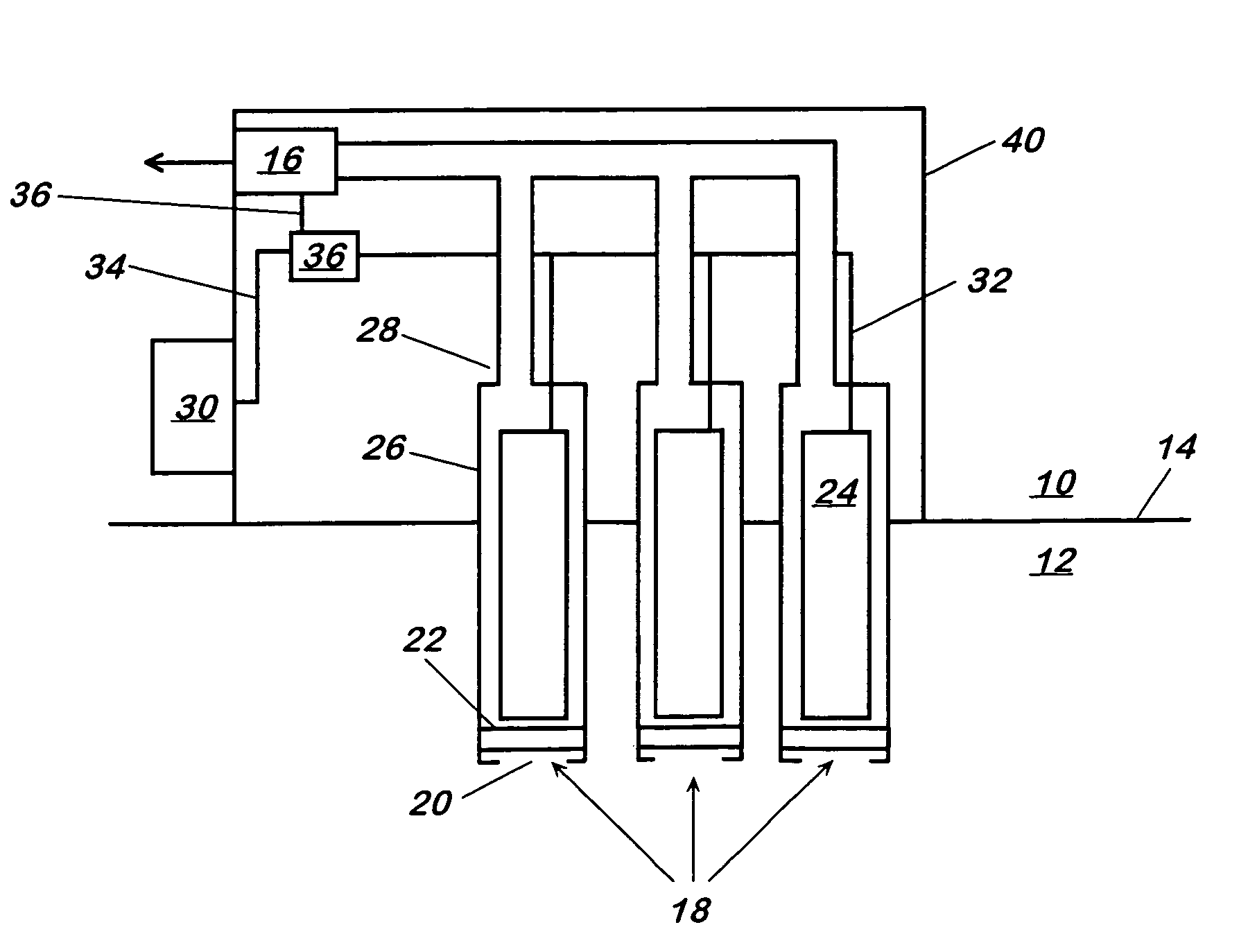Method and apparatus for generating power from voltage gradients at sediment-water interfaces using active transport of sediment porewater
a technology of active transport and voltage gradient, applied in the field of fuel cells, can solve the problems of limited sustained power generation, limited period of time over which a sensor or instrument can operate, and inability to configure and deploy anodes with sensors and instruments, and impracticality of sediment impounding and impounding
- Summary
- Abstract
- Description
- Claims
- Application Information
AI Technical Summary
Benefits of technology
Problems solved by technology
Method used
Image
Examples
example 1
[0042]Single-tube cell without pumping—A number of models were been examined. These models were operated in 10-gallon plastic aquaria each containing a sea floor consisting of ocean sediment and seawater. Sulfide-rich sediments obtained from a coastal marsh region near Tuckerton, N.J., were used. One model consisted of a single anodic tube and graphite bottle brush cathode. In this model, the anodic tube consisted of an 11-inch long×1-inch inner diameter (1.25-inch outer diameter) PVC tube with a matching PVC end cap attached to one (top) end. The filtering material consisted of a woven nylon scouring pad stretched across the open (bottom) end of the tube (inlet) using a nylon cable tie. The anode consisted of a 9-inch length of graphite bottle brush electrode inserted lengthwise into the tube. A water insulating electrical connection was fashioned at one end of the anode between the stainless steel wire core and a water-insulating electrical lead. The electrical lead was passed thr...
example 2
[0048]Single-tube cell with pumping—Long-term power production was characterized in the standard manner. A potentiostat was connected across the anode and cathode electrical leads to emulate a variable resistance load across which current was passed between the anode and cathode at fixed voltage of 0.35 V corresponding to the average voltage of maximum power determined from analysis of FIGS. 4 and 5. In the case of the model characterized in the short term in Example 1, the fuel cell was at open circuit voltage of 0.702 V, then discharged using a potentiostat such that the voltage was maintained at 0.35V. In FIG. 6, the left axis scaling indicates sustained power, right axis scaling indicates sustained power density (power normalized to inlet area of 5.1 cm2). Characterization indicates the magnitude of power decreased to 0.29 mW (0.57 W / m2) after 31.7 hours of power generation at 0.35 V. At 31.7 hours, the pump was turned on at rate of 21 mL / min. This resulted in an immediate incre...
PUM
| Property | Measurement | Unit |
|---|---|---|
| voltage | aaaaa | aaaaa |
| area | aaaaa | aaaaa |
| area | aaaaa | aaaaa |
Abstract
Description
Claims
Application Information
 Login to View More
Login to View More - R&D
- Intellectual Property
- Life Sciences
- Materials
- Tech Scout
- Unparalleled Data Quality
- Higher Quality Content
- 60% Fewer Hallucinations
Browse by: Latest US Patents, China's latest patents, Technical Efficacy Thesaurus, Application Domain, Technology Topic, Popular Technical Reports.
© 2025 PatSnap. All rights reserved.Legal|Privacy policy|Modern Slavery Act Transparency Statement|Sitemap|About US| Contact US: help@patsnap.com



